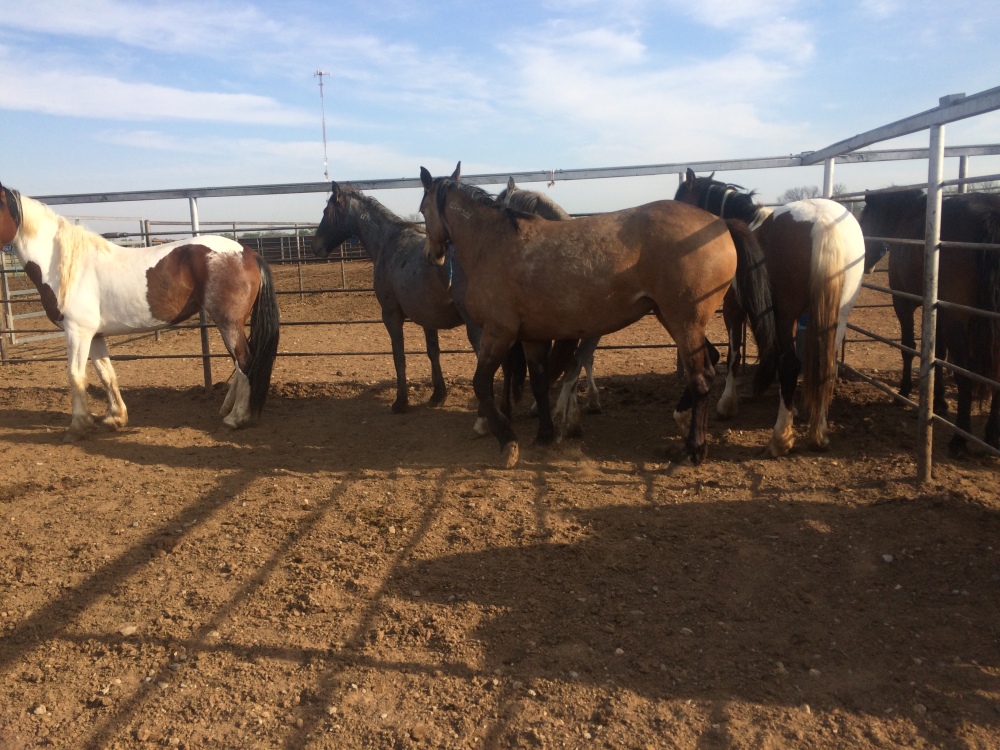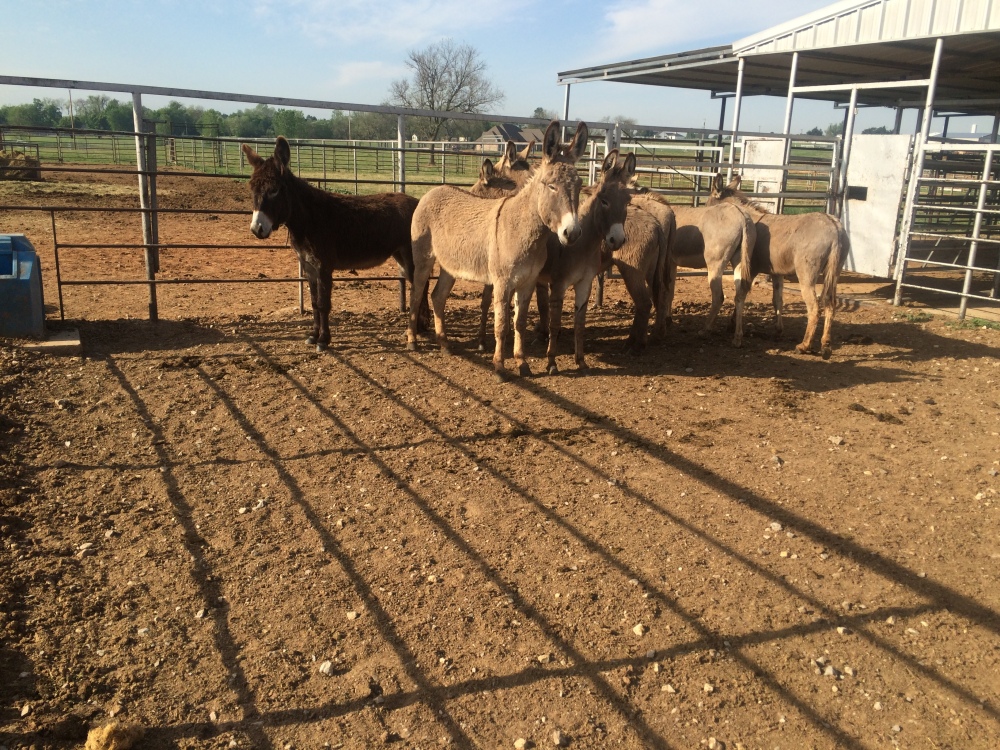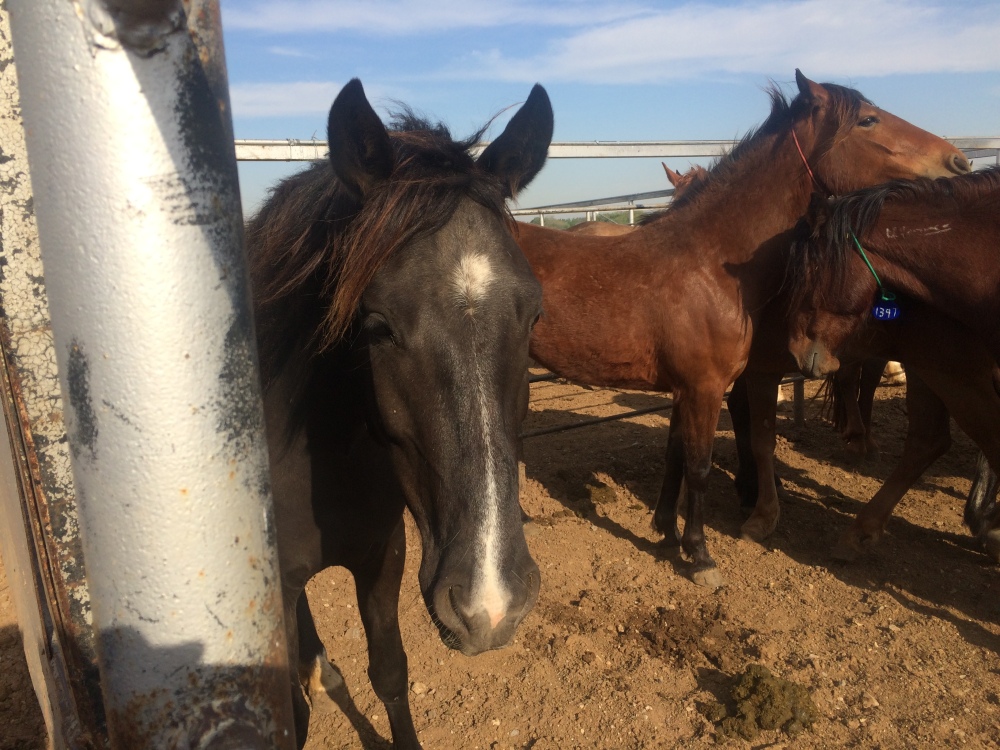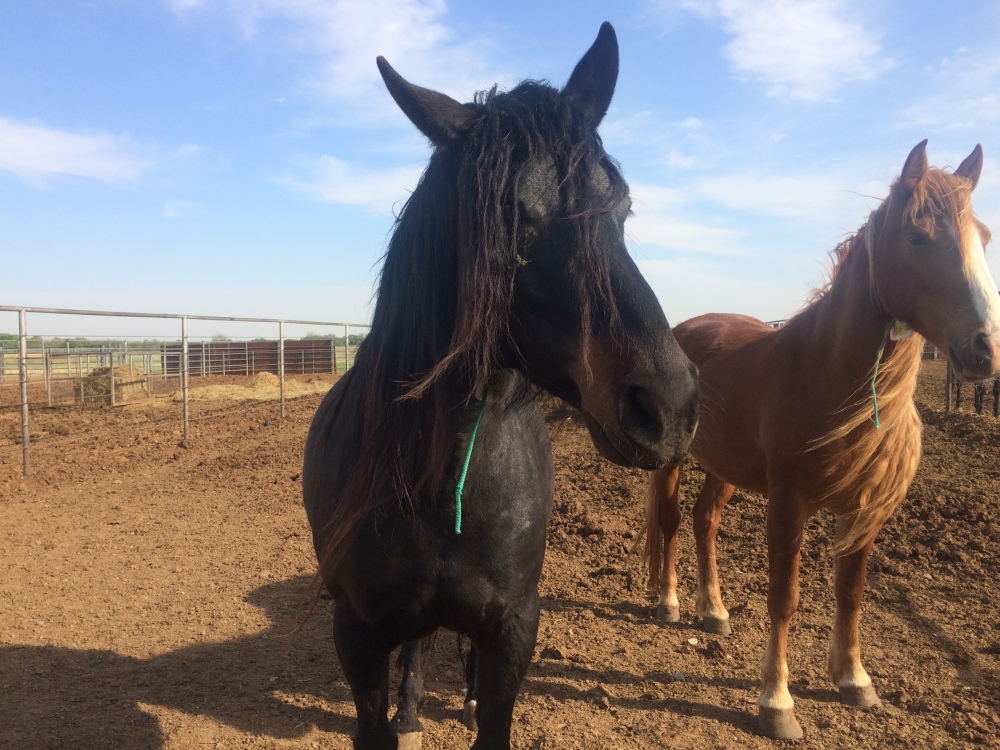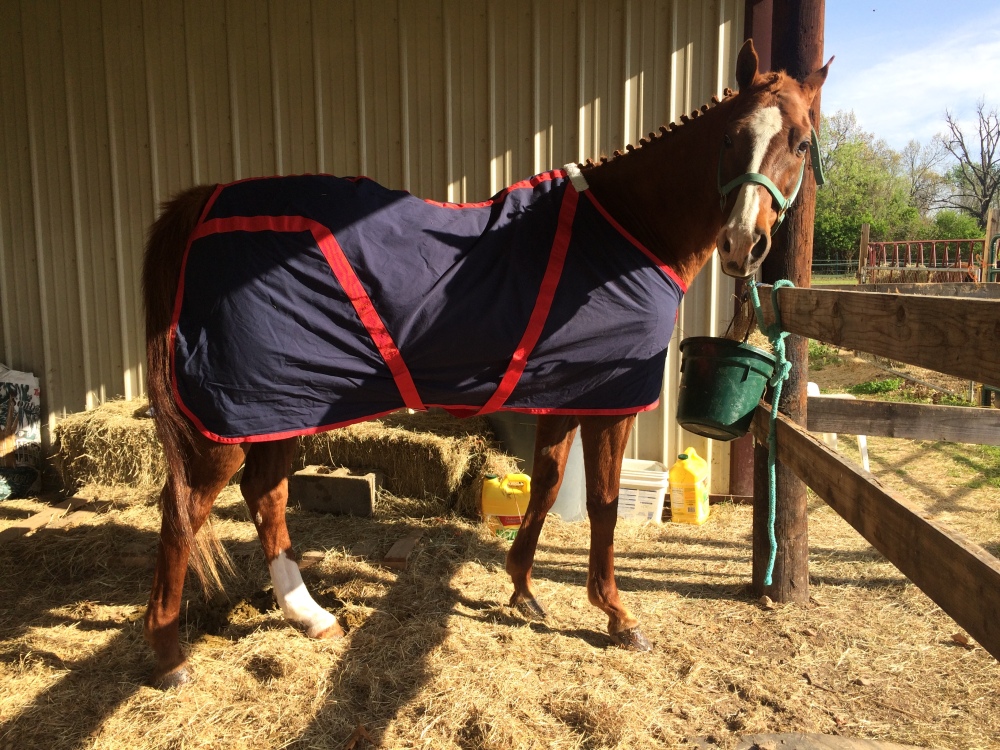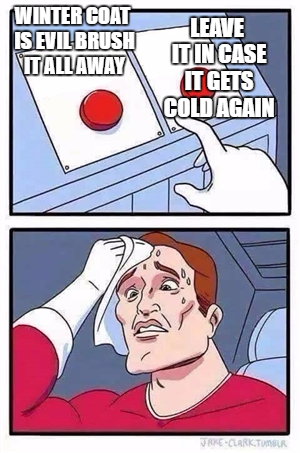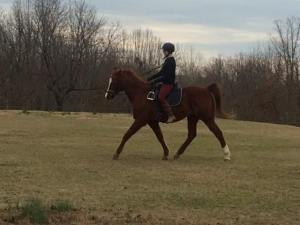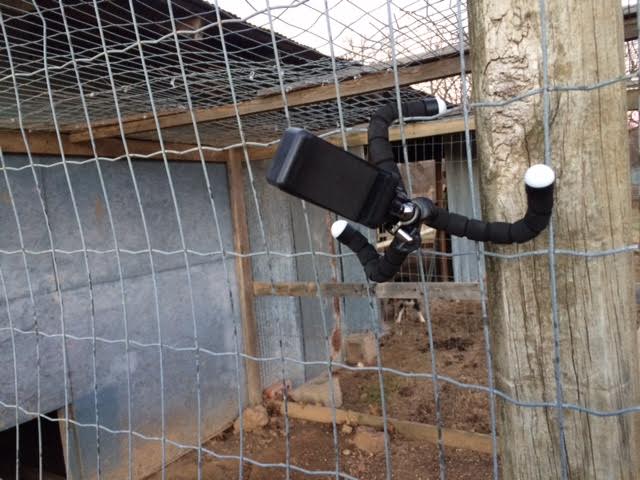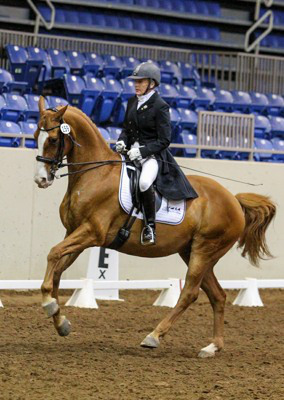The classical art of lunging has been passed down by word of mouth from generation to generation, but has sadly experienced a decline of late as training shortcuts have become more mainstream.
Luckily, the German National Equestrian Federation is here to save the day again with their handy manual: Lungeing: The German Riding and Driving System Book 6. This is a definite must have for all dressage junkies.

Are you guilty of the GNEF’s top ten deadly lunging sins? I know I’ve committed most of these!
1. Using lunging as a means of “getting the sillies out”.
The GNEF says: “For no matter what reason the lunge is used, it’s highest value lies in the psychological aspect…trotting around wildly without side reins is useless and counter-productive” (GNEF, 1992, pg. 1, 60).
It may be tempting to fling your horse out on a lunge line before riding and let him fly kite-like on the other end till he gets too tired to be an add squirrel under saddle, but this approach is only advantageous in the short term. You will only glean the full benefits of lunging if you work gradually and systematically to train your horse’s brain to work as much as his body on the lunge. It’s important to take the extra time to help your horse work correctly with his back, bending on the circle.
2. Using the roller by itself with no saddle underneath.
What the GNEF says: “Through ignorance, or simply because it involves less work, some people lunge horses in just a roller and without a saddle. This allows the roller a certain mobility, which limits the effectiveness of the side-reins. The missing weight on the horse’s back also diminishes the effect of the lunging” (GNEF, 1992, pg. 11).
I was surprised by this since I’ve always seen people lunging with just a roller and a dressage pad. Also, the surcingles and lunging training systems are always advertised in catalogs are always by themselves. However, it makes sense. As with a rider, you want your roller to be as stable and balanced as possible. Also, the extra weight is a great incentive to get your horse to really lift his back.
3. Lunging in a halter instead of a cavesson and not using side reins.
What the GNEF says: “A proper bridle should be used, even with a cavesson. Lunging a horse off a head collar is not correct and can lead to many problems. A head collar cannot be fitted as firmly as a cavesson and will slip around the horse’s head and can injure the eye” (GNEF, 1992, pg. 11).
The GNEF recommends using a bridle with the lungeing cavesson on top for extra stability. It also suggests that you use a drop noseband with your bridle so it doesn’t get in the way of the cavesson. Personally, I don’t own a lungeing cavesson yet, but I’m hoping to invest in one soon. I’m hoping to find a nice used leather one so I can use the extra weight to my advantage. As a naughty lifelong halter-lunger, I can attest that halters are only good for short and sloppy lungeing sessions that result in twisted halters and wild-eyed snorty horses.
4. Not using side reins, or using improper side-reins.
What the GNEF says: “Side-reins are a necessary part of the lungeing equipment. There are many different types available, but not all of them are suitable for all horses…Some side–reins have elasticated webbing– to soften the effect of the sider-rein. These are not recommended. The additional weight of the rubber ring disturbs the action of the bit in the mouth” (GNEF, 1992, pgs. 14, 15).
In the eyes of the GNEF, lunging without side-reins is as useless as trying to ride your horse without your hand aids. However, the book carefully outlines the proper bounds of side-rein usage. A horse’s first several lunging sessions should be without the side-reins, and the length of the side-reins must always be evaluated based on the horse’s conformation and training level. The point of side-reins is not to crank the horse’s head in, but to teach the horse to work straight through the bridle and push from his hind quarters up to the bit. I also found it interesting that the GNEF is not a fan of “donut” side-reins, as they allow too much play in the reins. Also, the GNEF notes that adjusting the inside rein shorter than the outside rein in the beginning of training is improper as encourages the horse to over bend and grow crooked.
If I get the chance to start my own horse again, then I will definitely use side reins on the lunge to help my horse understand the concept of consistent contact.
5. Holding the lunge line like you hold the reins.
What the GNEF says: “It is not correct to hold the lunge in the same way as holding the rein when riding. This creates in the hand a backward-pulling influence” (GNEF, 1992, pg. 32).
This one was especially interesting since that is exactly how I have always held the lunge line. No one ever taught me how to do it that way, I just thought it was more correct. Instead, the GNEF suggests holding the rein so the loops can slide between your index finger and thumb from the top. This will ensure that your wrist stays relaxed and you can keep a softer feel in the reins.
6. Lunge line trailing the ground.
What the GNEF says: “[A line] dragging the ground is heavy on the horse’s mouth” (GNEF, 1992. pg. 32).
This one’s a no-brainer but always bears repeating. A dragging lunge line could result in all manner of cluster-fudgey situations for horse and rider.
7. Lunging without a whip.
What the GNEF says:“To lunge without a whip is a waste of time, as it is like riding without forward-driving leg aids” (GNEF, 1992, pgs. 33, 34).
Guilty here again. Some of the horses I used to work were fairly hot and thought the whip was going to eat them. Instead of doing my due-diligence and desensitizing them to the whip, I just tossed the end of the line at them when I wanted them to move out. Bad me. The book has some really interesting things to say about which points on the horse are the best to flick the whip towards for different problems. Ie, where to cue the horse if you want him to drive forward more, where to cue for more hock action, and where to go to ask the horse to lift his back. I had no idea how many ways you could use the whip besides aiming sloppily at his bum.
8. Attaching the lunge line directly to the bit.
What the GNEF says: “To help the horse receive the half-halts attach the lunge rein to the cavesson so that its influence is felt on the nasal bone. If the trainer is experienced, however, and the work is progressing well, the lunge can be attached to the inside bit ring, but at first only in conjunction with the cheek-piece of the noseband” (GNEF, 1992, pg. 47).
The GNEF places a high value on preserving the softness and sensitivity in the mouth. It is improper to connect the lunge line directly to the bit, even on very experienced horses. The progression should always begin with the cavesson, then a combination of cheek piece and bit ring so the horse isn’t a victim of unintentionally rough handling of the mouth.
9. Introducing the calvaletti too early, jumping on the line.
What the GNEF says: “When training young horses loss of balance will be the biggest problem, and this has to be overcome before demands can be increased. The young horse finds his balance easier on a straight line than on a circle. This also applies on the lunging circle, although here the horse is not interfered with by the rider’s weight. For this reason lunging over calvaletti should not be introduced at the beginning of the training on the lunge…using calvaletti on the lunge too early…can cause injuries like splints and sprains…When jumping on the lunge, even over small fences, the danger of injuries is very much greater, as the inward pull of the lunge can force the inside foreleg to twist, turning the fetlock joint and pedal bone” (GNEF, 1992, pgs. 57, 58).
Guilty again here. Balance and self-carriage are non-negotiable prerequisites to training with calvaletti. However, I think riding or long-lining over calvaletti in a straight line could be beneficial for young horses as a baby step towards calvaletti on a circle.
10. Attempting in-hand collection exercises without the supervision of a qualified trainer.
What the GNEF says: “Practicing collection in-hand should only be done as part of advanced training” (GNEF, 1992, pg. 69).
As with all horsey pursuits, it’s best to dip your toes into in-hand work with the supervision of a trainer. In-hand collection work can be incredibly fun, but it can be counterproductive in the long run unless you get a knowledgeable trainer to work with you so your horse can reap the full benefits of the exercises.
In summary: go buy the book and read it two or three times!
Happy horsing around!
Lungeing: the official handbook of the German National Equestrian Federation. (1990). London: Threshold.






